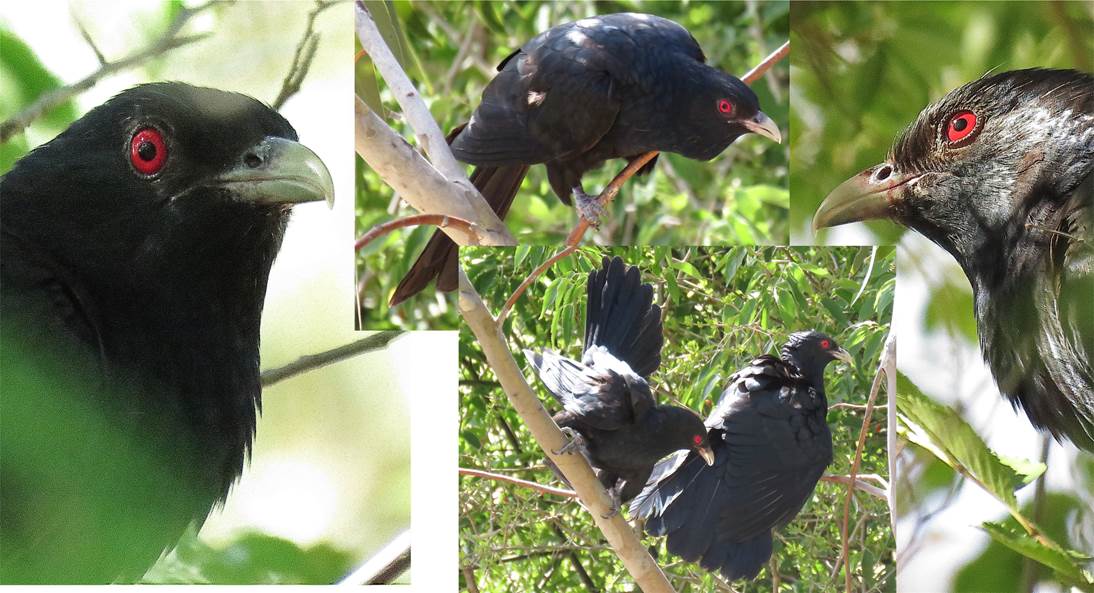Very interesting Geoffrey, your observations concur with mine as I have
observed/heard the male switch from the “koel” to the “wirra wirra”and back mid
call. Chat line subscribers have noted they have observed the female
calling, but I see few of them and am not familiar with the call they make,
though the one you describe is similar to that of adults I heard when they
interacted with the fledglings were had in out GBS etc at the end of last summer
(see my article in the most recent issue of CBN).
Koels arrived in our area in the last week of October and for the first
fortnight or so I only heard the Koel call, with the first wirra wirra call not
until nearly the middle of the month. Calls became noticeably less
frequent (and further away, >1 km as opposed to as close as within 500
m). If this means they have started, or are about to commence breeding, it
is consistent with my observations last summer which was a poor one for calling
but a good one for fledglings, with for the first time not 1 but 3 observed
within 500 m of my GBS (two within, again see my CBN article).
Jack Holland
From:
Sent: Wednesday, November 26, 2014 12:41 PM
To:
Subject: [canberrabirds] Koel behaviour
Local koel behaviour follows last year’s pattern, but more
so. 5/6 years ago there was much prolonged and persistent koeling
throughout the season from high stations, generally the same ones. Last
season there was some early koeling but later there was little of that to be
heard but instead intermittent wirra-wirraing throughout the day. The
wirra-wirra is now the standard call, with some kek-keking, presumably from the
female. My theory is that in general the koeling male seeks females that
are not in the immediate vicinity at the time. The wirra-wirra is an
excitement call when a female or females are present. This morning on
Rocky Knob the wirras were loud and frequent with an occasional kek. There
were 3 birds initially highish in the eucs. (Another male could be heard
further away in the direction of Captain Cook.) The female was seen to fly
off in that direction, leaving 2 males that engaged in a tense stand-off for
more than an hour, sometimes within a metre of one another, and mainly in
shrubbery within a metre or so of the ground. One bird, the more
aggressive, was smaller, the other being quite sluggish and reluctant to move
away. It is possible that the larger (older?) bird had moved into
territory claimed by the smaller bird. During the confrontation
there was not a single ‘koel’ but there was the occasional wirra, with some
clucking and churring. In the below the aggressive (smaller) male is on
the right and upper middle and on the left in the interaction shot. The
photos were taken with a compact camera from a range of 3-8
metres.

|
|

